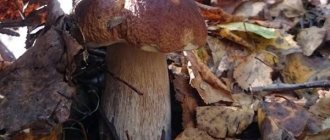GRAPE
People have been growing grapes for several millennia. Back in the 5th millennium BC, it was known in Asia Minor, Syria and Palestine. Then it began to be cultivated in the states of Mesopotamia, Assyria and Babylon, as well as Egypt. In the wild, grape stems twine around trees like vines. This property of grapes is still used today. Wild grape bushes are used to make decorative hedges. Wild grapes have small, sour berries. To keep the grapes large and sweet, winegrowers trim off excess branches. Nutrients are not wasted on new stems and leaves, but are supplied to ripening berries. Cultivated grapes were obtained as a result of numerous crossings of wild grapes growing in Central and Southern Europe, as well as in Asia Minor. A special role was given to grapes in Ancient Greece. Already at that time, people learned to extract juice and wine from grapes. Grapes spread throughout Europe further and further north. It came to Russia at the end of the 16th century. The first vineyard was founded at the monastery in Astrakhan. Peter I issued a decree on the cultivation of grapes in the villages of the Don Cossacks. Grapes are eaten fresh, compotes and juices are prepared from them. The properties of the berries are also preserved in dried fruits. In ancient times, dried grapes (raisins) were taken with them on military campaigns. Depending on the variety, grape berries can be round or elongated, as well as red, dark blue or white-green. In total, more than 5 thousand varieties of grapes are known in the world. Even the temperature at which it grows affects the taste of grapes. If it is dry and warm, the berries turn out sweet and juicy, and if it is cold, the grapes become sour. The best grape varieties are grown on the slopes of hills and mountains. It is especially good to plant these berries on the eastern slopes, which are warmed by the sun's rays in the morning. The most famous vineyards are located in France, Italy, Spain and Crimea. RIDDLE On a string-stalk There is a pile of sweet berries - On a large dish. (Grapes) FOLK SIGNS • Frequent and cold rains - no bees, no grapes.
Classification
Three types of berries: real, complex, false
There are several groups of berries, according to which their classification is made:
- real (correct) - this category includes types of typical fruits, which are characterized by a dense peel and the presence of 1 - 5 seeds;
- false - the formation of the pulp of fruits of this type is carried out not from the ovary, but from another part of the fruit, for example, from the receptacle;
- stone fruit - a hard-skinned fruit that grows from an ovary with a single seed surrounded by a hard woody layer;
- complex (berry-like) - the group includes plants with a collection of berries growing from one stalk;
- poisonous – fruits, the consumption of which is harmful to the human body.
These are the main classifications, but besides them there are other types.
For example, due to their characteristic similarity, strawberries and strawberries are classified as fruit plants, and some scientists believe that they are nuts. Although according to the official version, these are berries. Interesting fact : even among biologists there are numerous disputes about classifying this or that fruit as a berry or fruit.
STRAWBERRY
I was walking in the forest, carrying strawberries. I was looking for them, picking them. I’ll bring it to kindergarten and treat all the kids. (A. Brodsky)
Strawberry bushes grow in forests, forest ravines, thickets of bushes, and in river and stream valleys. The stems with bright red berries droop all the way to the ground - hence the name of the plant. Strawberries are an incredibly aromatic and tasty berry. Its scientific name is “fragaria”, which means “fragrant”. Strawberries are often called strawberries. In fact, strawberries, although similar to wild strawberries, are a different type of plant. Strawberries have small berries, so they are not used for breeding. To collect wild strawberries, you will have to work hard. The berries hid under green leaves. You need to bend down to the ground, lift the leaves - then you will notice the strawberries. Garden strawberries were developed in the 18th century. The French officer A. Frezier brought five strawberry bushes from Chile to Europe. They were planted next to a Virginia strawberry bush from North America. This is how garden strawberries appeared. Currently, about two thousand of its varieties are known; more than a million tons of berries are harvested every year in the world. People nicknamed strawberries the “queen of berries” for a reason. It contains many useful substances and vitamins. Medicinal decoctions of dried berries and strawberry leaves are drunk for sore throats and colds. Peasants in Rus' associated July 9 with the Tikhvin Icon of the Mother of God. It was as if she had appeared after long wanderings in the strawberry fields, where the city of Tikhvin now stands. If you eat a glass of strawberries on this day, you will recharge yourself with energy for the whole year. RIDDLES Like a stitch, on a path I see scarlet earrings. I found this earring. I bent down for one, and came across ten! (Strawberries) FOLK SIGNS Strawberries are red - don’t eat oats in vain. When they mow, they bring strawberries home.
Reproduction methods
Berry crops require periodic renewal. Preservation of valuable varietal characteristics will ensure propagation by vegetative means. This process involves using a mother plant to grow a new one. When carrying out such procedures, the reproduction period of each of them and its characteristics are taken into account.
Common methods of vegetative propagation are:
- using green and woody cuttings;
- when using horizontal layers;
- root shoots, by separating them from the main bush;
- dividing the bush into separate parts in such a way that each of them has a good root system and two strong shoots;
- tendrils formed by the mother plant.
Using a strong, healthy, abundantly fruiting mother plant for propagation that best meets the requirements of the variety will provide the gardener with good planting material. Weak shoots with mechanical damage are not suitable for layering and cuttings. Rejection also applies to reproductive material with signs of fungal or viral disease.
RASPBERRIES
I'll bring a full basket of raspberries home. I'll make some jam, there will be a treat for friends in winter! (T. Shorygina)
In the temperate zone of Eurasia, in the European part of Russia, in Siberia and the Far East, common raspberries are found. Raspberry bushes reach a height of two meters. Raspberry thickets can be seen in forest clearings and edges. Berries, like red lanterns, strewn the branches. The berries on the upper branches, closer to the sun, ripen earlier than others. In the first year of life, raspberries have grassy shoots with thin thorns. There are no flowers or fruits yet. In the second year, the stems become woody and white flowers form on them, and then small green berries appear. They sing and turn red. Raspberry fruits are collected from small drupes that are pressed tightly together. Each small drupe contains a hard seed. Forest animals and birds eat raspberries with pleasure. The bear especially loves her. Raspberries contain sugars, vitamins, organic acids, pectin and tannins. Tea made from dried fruits is a diaphoretic and antipyretic. An infusion is brewed from the leaves - “raspberry tea”, which is used to gargle for sore throat and inflammation of the larynx. Raspberry jam is very useful for colds. On August 17, Avdotya Day, peasants went into the forest to pick raspberries. On this day, guys do not choose brides - they are all as beautiful as a red raspberry. A guy in a raspberry patch will be lost in thought, and then a girl will appear to him; he will rush to hug her, and instead of the beautiful maiden there will be a raspberry bush, or even a bear feasting on raspberries. Peasants determined the date of sowing rye based on the degree of ripening of raspberries. Raspberries were collected for future use, dried, and prepared into jam and juices. RIDDLE Red beads hang, looking at us from the bushes. These children, birds and bears love beads very much. (Raspberries) PROVERBS AND SAYINGS Avdotya Malinovka - wild raspberries are ripening. If you didn’t put a raspberry in your mouth, you never saw life.
- To the begining
- Back
- 1
- Forward
- In the end
Edible wild berries: photo
Wild fruits are highly valued when used for medicinal purposes and in nutrition.
Wild berries contain many useful macro- and microelements, vitamins, and other biologically active substances. Therefore, wild fruits are highly valued when used for medicinal purposes and in nutrition. You can collect wild berries from early summer until late autumn, right up to the appearance of the first snow cover.
Strawberries
Strawberry leaves and fruits are widely used for medicinal, cosmetic, and nutritional purposes.
The plant is 15 cm high with elongated red fruits. Grows in clearings, woodlands, and forest edges. It begins to bloom in early summer with white fragrant inflorescences. Strawberry leaves and fruits are widely used for medicinal, cosmetic, and nutritional purposes. The berry is dried, decoctions and teas are made from it, it helps with diseases of the genitourinary system, cholelithiasis, diabetes, and diseases of the digestive system.
Wild currant
There are black, yellow and red
forest currants grow in almost every forest, with the exception of particularly cold regions. It comes in black, yellow and red. Yellow currants are the sweetest of the three varieties, and red currants contain the most pectin. Like homemade ones, forest currants are used to make compotes, jellies, jams, and the leaves are widely used in various decoctions. The medicinal properties of wild currants are manifested in the treatment of infectious and cold-related diseases, the circulatory system, and the gastrointestinal tract.
Forest raspberry
Most often used to treat colds and skin inflammations,
wild raspberries can be recognized immediately, since they are practically no different from garden raspberries. It is rich in healing properties; every part of this plant is used for medicinal purposes - stems, leaves, berries, roots. Most often used to treat colds and skin inflammations.
Stone berry
It is used in cooking and folk medicine.
A small herbaceous plant 30 cm high with small white flowers, which by mid-summer turn into bright red fruits, collected in a bunch of 1-6 pieces. The berries have a sour taste and contain a large seed inside. It is used in cooking and folk medicine as a rich source of vitamin C, flavonoids, pectin and phytoncides, which help fight many diseases.
Blueberry
Blueberry leaves and fruits are used to treat enterocolitis, gastritis.
A shrub about 1 meter high with bluish-colored fruits. More often found in northern regions, resistant to frost. Harvesting blueberries is very difficult because the fruits are very unstable for transportation. The juice is stored for a very short time and quickly begins to ferment. Blueberry leaves and fruits are used to treat enterocolitis, gastritis, and also as an antipyretic, vasodilator, and anti-inflammatory agent.
Cowberry
The most valuable medicinally are the leaves of lingonberry, and then the fruit.
It grows mainly in pine forests of northern latitudes. The plant has a short stem, leathery leaves of dark green color. The fruits are bright red in color with a sour taste. The most valuable medicinally are the leaves of lingonberry, and then the fruits. It is a natural antiseptic, also used as a diuretic and vascular strengthener.
Blueberry
The fruits help improve vision, strengthen capillaries, and prevent the development of diabetes.
Blueberries are often confused with blueberries due to the bluish-black color of their fruit. Grows in moist, marshy soils. This is a small shrub up to 40 cm high, with elongated leathery leaves, the flesh of the fruit is sweet and red. The fruits are consumed fresh; they help improve vision, strengthen capillaries, and prevent the development of diabetes.
Rose hip
Rose hips are valued for their storehouse of vitamins and beneficial microelements.
They grow throughout Russia; there are about 40 species of rose hips in the forests. This shrub can reach five meters in height and blooms with pink or white flowers. It is easily recognized by its stems covered with thorns and fruits in the form of a false polynut with an overgrown receptacle. The fruits are bright red or orange-red. Rosehip is valued for its storehouse of vitamins and beneficial microelements, which help replenish their deficiency in the body, as well as treat various diseases.
Sea buckthorn
Sea buckthorn contains many vitamins, flavonoids, microelements, as well as antioxidants.
A small shrub up to 3 meters tall with long green leaves. Young shoots have a silvery tint and later turn into rough bark. The fruits of sea buckthorn are oval, rounded, bright orange in color, and grow in dense clusters on the branches. Extremely healthy sea buckthorn contains many vitamins, flavonoids, microelements, and antioxidants. In addition, sea buckthorn is used in cosmetology and cooking. Excessive use is contraindicated in case of urolithiasis and increased stomach acidity.
Blackberry
Eating blackberries normalizes metabolism and increases immunity.
Blackberries can be bushy or long-fruited. Reaches a height of 1.5 meters, blooms with large white flowers. Blackberry fruits are similar in shape to raspberries, only black in color with a bluish coating. The taste of blackberries is sourish-tart. Eating blackberries normalizes metabolism, improves immunity, and infusions and decoctions of roots and leaves have wound-healing, anti-inflammatory and astringent effects.
Barberry
With its taste qualities, barberry can replace lemon juice.
The shrub grows mainly in the south of Russia, it has yellow flowers with oblong fruits of bright red color with 2-3 seeds inside. The berries are sour, but pleasant to the taste. Harvesting ripe and overripe fruits is difficult because they are very soft. The greatest vitamin value is not the berries, but the bark and leaves of the bush. With its taste, barberry can replace lemon juice.
Black and white mulberry
Black and White Mulberries
A member of the mulberry family with tough, toothed leaves, the fruits of the black mulberry are very fragrant and juicy, almost black or dark purple in color. White mulberries have greenish, yellowish or white berries with a sweet taste.
Black elderberry
Elderberry can be recognized by its characteristic aroma.
Black elderberry grows in the south; the tree can reach 6 meters in length. Branched stems with a porous structure, dark green leaves on short petioles. Baskets of flowers are white with a yellowish tint, the colors are collected together and reach 25 cm in diameter. Elderberry can be recognized by its characteristic aroma. The berries are black with a purple tint and small in size. Each part of the tree is used for medicinal purposes to treat genitourinary, dermatological, kidney problems, and colds.
Cloudberry
Eating cloudberries has a very beneficial effect on almost the entire body
. Northern herbaceous plant with 30-centimeter stems. As cloudberries ripen, they turn from bright red to orange. Grows among marshy thickets with abundant moss. The unique beneficial properties of cloudberry allow it to be used as a remedy for many diseases, as well as a dietary product and a means for the beauty of skin, hair and nails. Eating cloudberries has a very beneficial effect on almost the entire body.
Of course, not all edible berries that can be found in the forest are listed. But even those listed above can help strengthen the immune system if you have a cold in the forest during a hike, or relieve inflammation, irritation, have an antiseptic effect, not to mention saturating the body with vitamins and other useful substances.
All people, and especially children, love berries. Educational activity for children
will allow the child to find out what
types of berries
.
To prepare for this lesson we used:
- Manual “” for classes with children three to four years old: “What is in the basket?”
- Developmental lotto “Gifts of Summer”
- Textbook for kids by V. Stepanov “Native Nature”.
Then we take a card with the name () of the berries. We describe the berry, and if the child names it correctly, we give him the card.
If it is incorrect, then we help you find the correct answer with leading questions.
We are extremely happy when a child guesses the riddle.
After the child fills the entire field with berries, we begin the most interesting part - tasting the berries.
Benefit
Berries contain many vitamins, so people grow them specially.
If various berries are present in the diet, the human body is replenished with a huge amount of nutrients. By consuming such fruits, people are less susceptible to developing diabetes, Alzheimer's disease, oncology, and cardiovascular diseases.
Their phytochemicals have anti-cancer and anti-inflammatory properties. They act as antioxidants and are also involved in regulating the following activities:
- gene expression;
- modeling of nuclear receptors;
- restoration of damaged tissue;
- normalization of signaling pathways.
Intestinal flora in the form of beneficial microorganisms involved in the digestive process is formed upon the intake of berry phenolic compounds. They provide various types of benefits in the healthy functioning of the body.
Interesting: Does liquid in trees freeze in winter?
Antioxidants present in berries perform the following actions:
- prevent cardiovascular diseases;
- reduce the progression of the general inflammatory process;
- increase the body's resistance to degenerative diseases;
- resist oxidative stress;
- improve cognitive functions.
Interesting fact : berries contain such a powerful antioxidant as ascorbic acid, thanks to which they are able to remove high radicals and resist acute liver damage.
Regular consumption of such fruits helps reduce body weight and improve skin condition.







